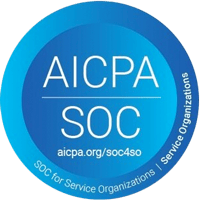Across industries, tuition reimbursement for nurses is gaining in popularity. Employers with tuition reimbursement programs finance some or all of the employee’s educational costs. This can be particularly helpful for healthcare employers looking to attract candidates and reduce turnover.
There are a lot of ways to run a tuition reimbursement program. Employers can offer funds to help current employees pursue certifications and courses related to their work. Or employers can take it even farther by offering in-house training. In some cases, businesses might fund a worker’s entire degree program in exchange for time worked.
A lot of options, right? But before you start creating your own tuition reimbursement program, you need to learn if it’s right for you.
Pros and Cons of Tuition Reimbursement for Nurses
Pro: Gain Skilled Workers
With the ongoing staffing shortage, it’s no secret that healthcare employers must compete for talent. There’s no overstating the appeal of tuition reimbursement for nurses, who typically owe between $40,000 and $55,000. Currently 69% of nursing graduates take out loans to finance their education. Cutting down on these loans could be what gives you the edge over the competition.
Keep in Mind: Advertise Widely
Of course, you won’t attract more candidates if they don’t hear about the program in the first place. If you help with tuition reimbursement for nurses, advertise it prominently in your job ads for the best returns.
Learn more about distributing jobs effectively
Pro: Increase Retention
According to a recent survey, 79% of employees agreed that “tuition assistance was an important or very important factor in joining their company.” A staggering 81% also stated that they’re more likely to stay if their employer has an education reimbursement program. Clearly, helping your employees afford schooling pays off.
You can also retain workers by using tuition reimbursement to forge career paths. Fund CNAs as they take courses to become LPNs, LPNs as they take courses to become RNs, and so on. By offering tuition reimbursement for nurses, you’re telling candidates that you care about their growth and their future.
Pro: Give Yourself a Tax Break
Tuition reimbursement for nurses can help your bottom line. In fact, it’s tax deductible, up to $5,250 annually per employee. In addition to helping you attract and retain employees, education reimbursement can factor into your overall budget.
Con: High Initial Costs
Nursing education in America is expensive. Most LPNs will spend anywhere from $10,000 to $15,000 total on education, though a multitude of factors could drive this cost up or down. Nursing can get even more expensive: a BSN, or bachelor of science in nursing, can cost from $40,000 to over $200,000.
You have control over how much you choose to spend on your reimbursement program. For instance, you might offer reimbursement for only certain degrees and certifications, or you might choose a ceiling for your reimbursement amounts.
But regardless, tuition reimbursement for nurses is not cheap—especially as you get the program off the ground. Eventually, in a well-run program, you’ll make up for these initial costs with retention and a skilled workforce.
Keep in Mind: In-house Training
Tuition reimbursement can go hand-in-hand with in-house training programs. You can create a clear career path by offering both in-house training and tuition reimbursement. CNAs will be able to become LPNs over time, and get more education if they desire. Candidates and trainees will be attracted to the opportunity of improving their skills.
Learn more about in-house training for CNAs
Con: Red Tape
It can take a lot of time and paperwork to successfully manage a tuition reimbursement program. Your employers will have to file paperwork proving that they’re meeting your requirements, and you’ll need to be in communication with the university. Over time, it’ll be easier to get a system in place. But you still need to request a lot of administrative work from what may already be an already overwhelmed HR department.
Con: A High Time Investment
The average LPN degree takes 12-18 months to complete, while a BSM can take up to four years. If your employees are working full- or part-time while they pursue their degrees, this can take even longer. Eventually, you’ll see returns in retention and more highly skilled employees. But initially, there might be a bit of a wait.
Questions to Answer Before Rolling Out Your Tuition Reimbursement Program
As you craft your tuition reimbursement program, you’ll have a lot of factors to consider. Here are some of the questions you should factor in before you begin building your tuition reimbursement program.
To Work or Not to Work
Many tuition reimbursement programs cover the cost of classes while a candidate is an employee. Asking workers in high-turnover positions, such as CNAs, to work part- or full-time as they go through school can also improve retention.
But even if your retention improves, there’s also an increased chance of burnout. Candidates will be pursuing education in their time off—time that they may have otherwise allocated for rest. You can also make the choice to sponsor a students’ dedicated time for education, on the understanding—underlined in an education contract—that they commit a minimum amount of time to your company.
Performance Requirements
Some employers require employees receiving tuition reimbursement to keep up a certain grade point average. Performance requirements can help you ensure that your employees are qualified for whatever role they take on next, though it could also add extra stress. What grades and other requirements would you like your students to uphold in order to qualify for tuition reimbursement?
Monthly and Yearly Caps
What is the total cost of education that you’re willing to cover? While tuition reimbursement is tax deductible for $5,250 per year per employee, may employers choose to reimburse further. It’s also important to discuss tuition caps per semester or quarter, and how the reimbursements will be delivered.
Who You Should Partner With
Consider if there are local colleges and certification programs that may make good partners for your tuition reimbursement program. You could even work with local schools to create enrollment programs, advertise open courses, and
Types of Courses and Degrees
Do you want to give your employees a flat fee to put towards whatever courses they’re interested in? Or are you only reimbursing nursing-related degrees, courses, and certifications? Giving candidates free reign in choosing their courses will likely be an attractive benefit, but there’s no guarantee that your employees will continue to work in healthcare.
Another Path: Reimbursing Student Loans
Tuition reimbursement for nurses isn’t the only option—student loan reimbursement is also popular among employers. In fact, the number of employers who offered student loan reimbursement doubled in 2020. Just like with tuition reimbursement, employers can contribute $5,250 per year per employee without taxes.
However, while both tuition and loan reimbursement attract more candidates, only tuition reimbursement allows you to sponsor education and that you believe will bolster your workforce.
Better Hiring With Apploi
With Apploi’s streamlined hiring process, you can find candidates whose careers you’re excited to help grow. Interested in learning more about how you can recruit, hire, and onboard healthcare staff quickly? Contact us today for a free demo of our end-to-end talent management solution.





